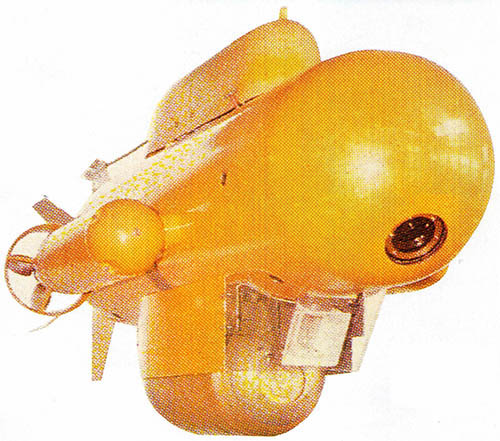줄어드는 삼각주
지난 1990년, 스미소니언 재단과 미국지리협회 후원하에 해양학자인 다니엘 스탠리씨가 지휘한 탐험은 지난 1만여년동안 인류 사회와 문명의 발전에 기여해왔던 지구상의 가장 기름진 지역이 점차 줄어들고 있음을 지적하고 있다.
문제의 지역은 바로 나일강 어귀의 삼각주다.
1만년전, 인류의 농경은 현 이라크와 이란사이의 고원에서 시작됐다. 초기의 농경은 불확실하기 짝이 없는 빗물에 의존했으나 점차 농부들은 수자원의 공급이 보다 용이한 가까운 강가로 이동했다.
천수농경을 벗어나고자 강가를 찾음은 너무도 당연한 것이기에 농부들이 그렇게 이동하는데 많은 시간을 소요하지 않았을 것 같지만, 실제로 논에 물을 대고 홍수에도 대비할 수 있도록 제방을 쌓고 고랑을 파기 전에는 강의 효과는 전혀 볼 수 없다. 그러려면 상호협동하는 제도가 필요한데 이에는 많은 시간이 필요했다.
그러나 기원전 4천년부터는 유프라테스강과 티그리스강 유역(현대의 이라크), 그리고 나일강유역(현대의 이집트)에 도시들이 건설되기 시작했다. 유프라테스강유역의 저지대에 정착했던 수메르인들은 기원전 3천5백년에 필기법을 개발했고 고도의 문명을 가장 처음으로 발전시켰다. 나일강가의 이집트인들 역시 그와같은 개념을 모방하는데 게으르지 않았으며 그들의 땅을 두번째 문명의 발상지로 발전시켰다.
이 두 그룹은 다음과 같이 다르다. 즉, 티그리스와 유프라테스강은 유목민들에게 양면으로 개방되어 있었으므로 수메르인들은 자기네들끼리의 전쟁 뿐만 아니라 아카드부족과 카시트부족 아라미아 부족들의 침략을 이겨내야 했다.
그러나 나일강은 사막을 통과하며 흘렀다. 동쪽이나 서쪽이나 사람이라곤 거의 살지 않았고 따라서 나일강가 사람들은 수천년동안 평화를 누리면서 지낼 수 있었는데 이는 그전이나 그 이후의 인류역사동안 가장 오래 안정이 지속된 기간이었다. 뿐만 아니라 나일강은 완벽한 고속도로구실을 했다. 강물은 남쪽에서 북쪽으로 흐르고 바람은 북에서 남으로 쉴새없이 불었다. 돛을 올리면 배는 남쪽으로 순항할 수 있었고 돛을 내리면 물결은 그들을 다시 북으로 운반하여 주었다. 또한 태풍도 일지 않았으며 나일강은 언제나 평온하기만 했다. 무역이 활발해지고 이에 따라 강주변의 도시들이 합쳐지면서 공통의 문화와 전통을 공유할 수 있는 '국가'를 건설하기에 이르렀다. 이집트는 지구상의 최초의 국가였다.
그런가 하면 매년 이집트남쪽의 동아프리카 산맥의 눈이 녹으면 나일강은 범람해 강유역에 기름진 진흙층을 쌓는 홍수를 만들곤했다. 이 홍수는 연례행사였기에 이집트인들은 지금 우리가 사용하는 달력을 만들 수 있었고 홍수 후 다시 농토의 영역을 구분하느라 기하학을 발전시킬 수 있었던 것이다.
뿐만 아니라, 홍수는 언제나 기름진 땅을 유지할 수 있도록 하였으므로 식량부족을 겪는 일도 드물었다. 성경에서도 가나안땅에 기근이 심할 때에 야곱의 아들들은 곡식을 사러 이집트로 가야 했다고 한다. 이집트는 언제나 곡식이 풍성하였다.
물론 그 기름진 땅은 나일강 양편으로 2마일정도에 불과하다. 나일강의 하구로 가면 강이 점차 넓어지며 물줄기가 삼각형으로 벌어져서 기름진 삼각주를 형성한다. (나일델타라고 불리는 이유는 그리스문자인 델타가 삼각형인 까닭이다). 요즘은 모든 강의 하구를 삼각주라고 부르는데 사실 미시시피 강의 삼각주처럼 전혀 삼각형이 아닌 것도 있다.
이집트는 고대엔 지구상에서 가장 부유한 국가였다. 기원전 1500년부터 1200년 사이에 이집트의 군대는 나일강 상류와 서아시아지역을 침략하여 '이집트 왕국'을 건설했다. 결국 기원전 525년에 페르시아인에게 정복 당해 다시 독립하지 못했지만 이집트는 번창을 지속해왔다.
기원전 300년과 30년사이, 이집트는 지구상의 가장 지혜가 뛰어난 국가였다. 알렉산드리아에는 박물관, 최초의 대학으로 생각될 수 있는 단체, 그리고 인쇄기술이 발명되기 이전에 찾을 수 있는 가장 큰 도서관도 있었다. 또한 이집트는 로마제국의 곡창이었다.
중세기 동안도 이집트는 모슬렘 세계에서 강국으로 유지돼왔다. 오늘날도 5천만인구가 나일강을 따라 대부분 삼각주에서 농사지으며 생활하고 있다.
그러나 이제 나일강의 삼각주는 최악의 상황으로 빠져들었다. 지난 1964년 수자원공급의 통제를 위해 건설된 아스완댐은 삼각주로 전해질 진흙의 양을 축소시켰다. 이미 쌓여있던 진흙도 서서히 가라앉고 있으며 이렇게 침수되는 흙을 대체시킬 진흙이 충분히 도달되지 않음으로써 이제 지중해는 나일강을 침범하고 있다는 것이다.
스탠리씨는 다음 1백년동안 지중해가 강을 따라 18마일이나 침범해 들어올 것이라고 예고하며 어쩌면 세계적인 온실효과로 바다의 높이가 오르면 더욱 침범해 올는지도 모른다고 한다. 그렇게 되면 지중해는 광활한 면적의 기름진 땅을 삼키게 되고, 해안선을 보호할 수 있는 방법을 모색하지 않는 한 엄청난 비극이 일어나고 말 것이다.
The Shrinking of The Delta
Expeditions in 1990 sponsored by the Smithsonian Institution and the National Geographic Society, under the leadership of the oceanographer, Daniel J. Stanley, indicate, that one of the most fertile areas on Earth, and one that has contributed to social and intellectual advance for 10 millennia, is shrinking.
The region in question is the delta of the Nile River.
Ten thousand years ago, agriculture was invented in the uplands between the modern nations of Iraq and Iran. At first, agriculture depended upon rain-water, which was always chancy, but, very slowly, the farmers moved to nearby river banks where the water supply was much more reliable.
It might seem that rivers were so obvious a source of water that it should not have taken long to move there, but rivers won't work unless you build levees and dig ditches to bring water to the crops and to prevent floods. That required the development of cooperative procedures, which took time.
Nevertheless, after 4000 B. C., city-states began to rise along the banks of the Euphrates and Tigris rivers (modern Irag) and along the Nile River (modern Egypt). The Sumerians who settled along the lower course of the Euphrates developed the art of writing by 3500 B. C. and built the first high civilization. The Egyptians along the Nile were not slow to copy the notion and a second high civilization was built there.
The two were different in this way. The Tigris-Euphrates were open on both sides to nomadic tribes so that the Sumerians not only fought against each other but had to fend off invading Akkadians Kassites, Arameans and so on.
The Nile River, however, flowed through a desert. East and west there were virtually no people, and the inhabitants along the Nile could live in peace and did so for thousands of years, the longest period of stability for any people before or since.
What's more, the Nile was a perfect highway. It flowed south to north, and the wind blew steadily north to south. By hoisting sails, boats could travel southward, by lowering the sails the current would carry them northward again. What's more, there were no storms and the river was always peaceful. Trade was encouraged and the city-states along the river combined to form a "nation," with a shared culture and heritage. Egypt was the first nation on Earth.
Then, too, every year, the melting snows in the east African mountains far to the south of Egypt swelled the Nile and produced an annual flood that put down a layer of fertile silt along its banks. Because it was an annual flood, the Egyptians developed the calendar we still use and they developed geometry so they could lay out the boundaries of the fields after the flood.
What's more, they rarely experienced food shortages, for the flood kept the land fertile. In the Bible when there was a famine in Canaan, the sons of Jacob had to go to Egypt to buy grain-there was always grain in Egypt. Of course, the fertile strip was just a couple of miles on either side of the Nile River. Toward the mouth of the Nile, the river spread out into a triangle of many streams which made up the fertile Nile delta (so-called because it had a triangular shape like the Greek letter, "delta.") Nowadays all river mouths are called deltas even when the shape, like that of the Mississippi delta, is not at all triangular.
Egypt was the richest nation on Earth in ancient times. For a period between 1500 B.C. and 1200 B.C., its armies invaded the upper Nile and western Asia and it formed the "Egyptian Empire." Finally it fell to the Persians in 525 B.C., and was never truly independent again, but it continued to flourish.
Between 300 B.C. and 30 B.C., it was the most intellectually advanced nation on Earth. In Alexandria, it had the Museum, the first organization that could be considered a university, and it had the largest library seen before the invention of printing. And it remained granary of the Roman Empire.
Egypt continued to be prominent in medieval times as part of the Moslem world. Even today it supports a population of 50 million people, strung all along the course of the Nile, most of them living and farming in the Nile delta.
But now the delta has fallen on evil times. The Aswan dam, built in 1964 to control the water supply, has cut down on the amount of silt that reaches the delta. The silt already present is slowly sinking, and since not enough silt is coming in to replace that which is sinking, that means that Mediterranean sea is advancing inward.
Stanley estimates that in the next hundred years the sea will advance inward some 18 miles, and perhaps more if there is global warming and a rise in sea level. It will swallow many square miles of fertile land and be an enormous catastrophe for Egypt unless they take measures to protect their coastline.
이 기사의 내용이 궁금하신가요?
기사 전문을 보시려면500(500원)이 필요합니다.
1991년 02월 과학동아 정보
글
이주헌 교수
🎓️ 진로 추천
- 해양학
- 지구과학
- 도시·지역·지리학

















